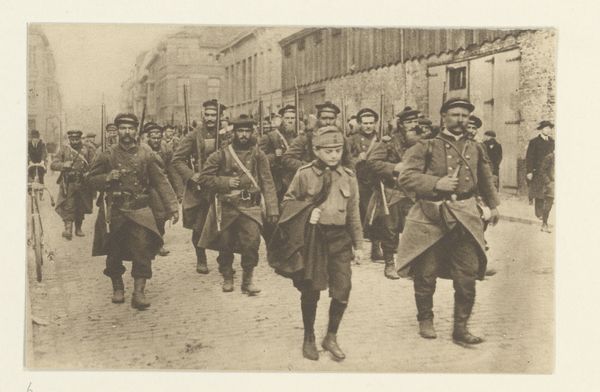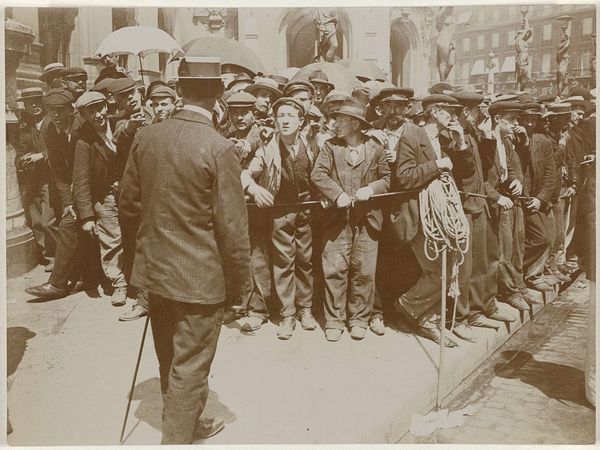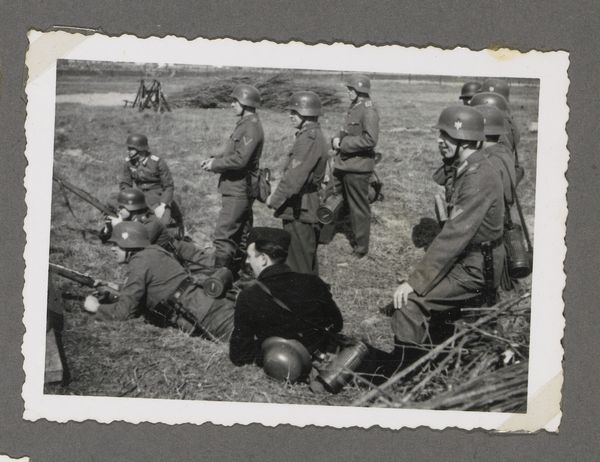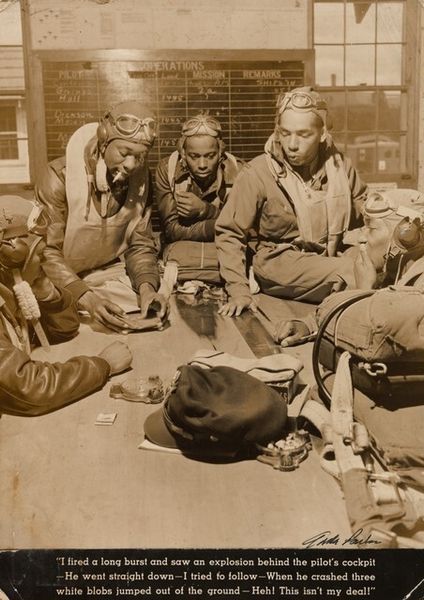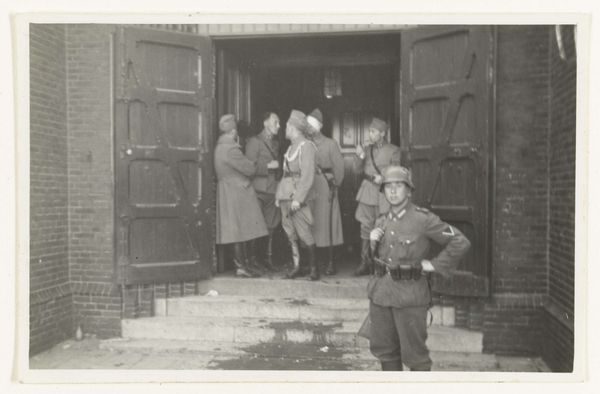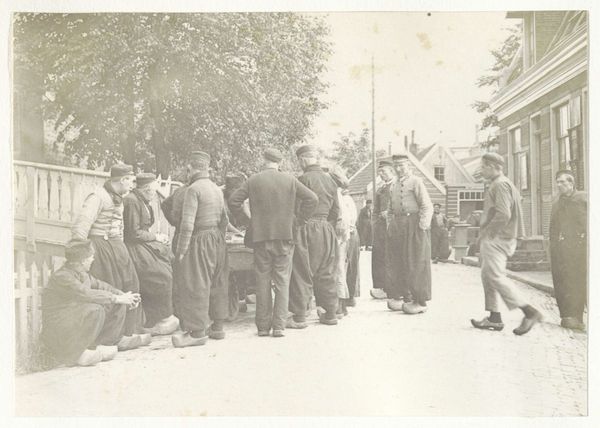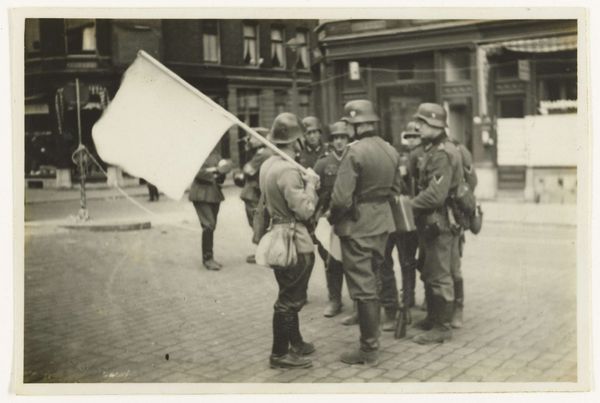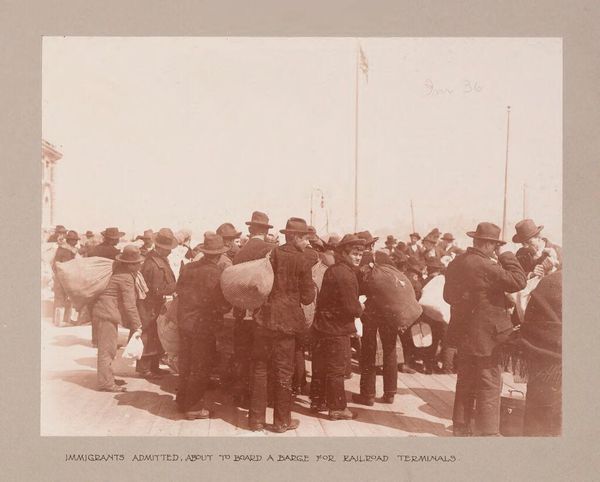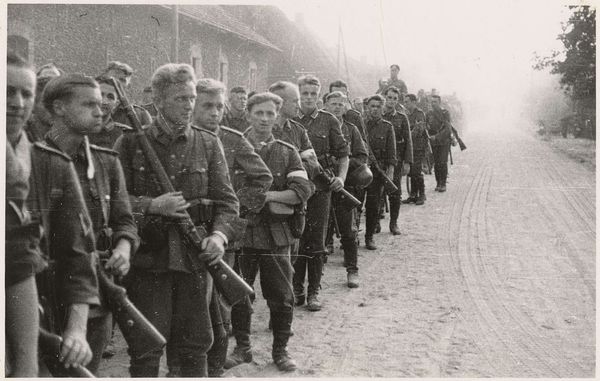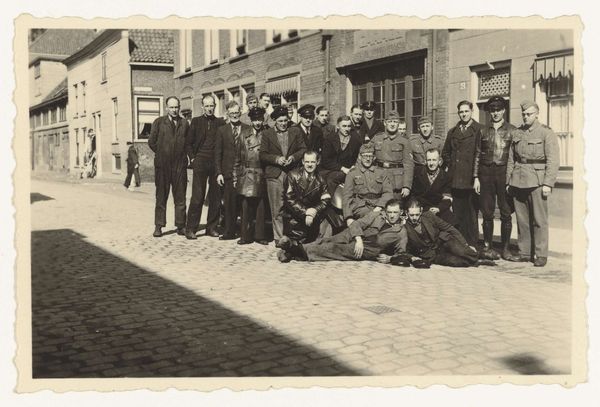
photography, gelatin-silver-print
#
portrait
#
black and white photography
#
photography
#
historical photography
#
gelatin-silver-print
#
monochrome photography
#
genre-painting
#
history-painting
#
realism
#
monochrome
Dimensions: height 5.5 cm, width 7 cm
Copyright: Rijks Museum: Open Domain
Editor: Here we have a gelatin silver print, "Franse krijgsgevangenen," or "French prisoners of War," likely from sometime between 1940 and 1946, currently held at the Rijksmuseum. It's a really striking image. The mood is so heavy, filled with weariness. What stands out to you about it? Curator: This photograph functions as a powerful document of a specific moment in history, capturing not just the individuals present, but also reflecting the broader social and political context of wartime France. Look at how the photographer has framed the scene, creating a tableau of defeat and resignation right in a French town, in front of buildings with signage still up. The architecture is ordinary but becomes politically charged as a backdrop to this defeat. What impact do you think this image would have had on a contemporary French audience versus a German one? Editor: That's a really interesting point. For a French audience, it would probably stir up feelings of shame and anger and for a German one perhaps a feeling of power. It makes you think about who the intended audience was for the image. It almost seems like it would be used as propaganda either way. Curator: Exactly! And considering the photograph is part of the Rijksmuseum's collection, it has transitioned into a historical artifact. How does being displayed in a museum change the original intent and reception of such a politically charged image? Editor: Being in a museum adds another layer of interpretation, like it becomes less about immediate propaganda and more about reflection. The photograph transforms into a preserved part of a country’s complex narrative. It feels more distanced, inviting study rather than a specific emotional reaction. Curator: Precisely. The image has been repositioned to represent cultural memory and historical discourse. Seeing art from the vantage of today transforms history. Editor: Absolutely. This photograph tells many stories - a personal one of those who were photographed, but more importantly of history, perception and a whole nation. Curator: Yes, even a simple image carries the burden of time. Thank you for this reflection.
Comments
No comments
Be the first to comment and join the conversation on the ultimate creative platform.
